There can be your advertisement
300x150
Garden Paths on the Dacha: 5 Ideas + Practical Tips
When decorating a garden plot, up to 30% of the budget is spent on paving. If you don't plan to use the paths frequently, you can make them from moss, grass, thyme, or other plants resistant to damage. Or choose other materials. About how not to get confused and make the right choice, experts from Derevo Park studio tell.
Think about the functions of paths
Why are they needed? For walks or for connecting different zones on the plot? There are three types of paths: automotive paving, main and secondary paths.
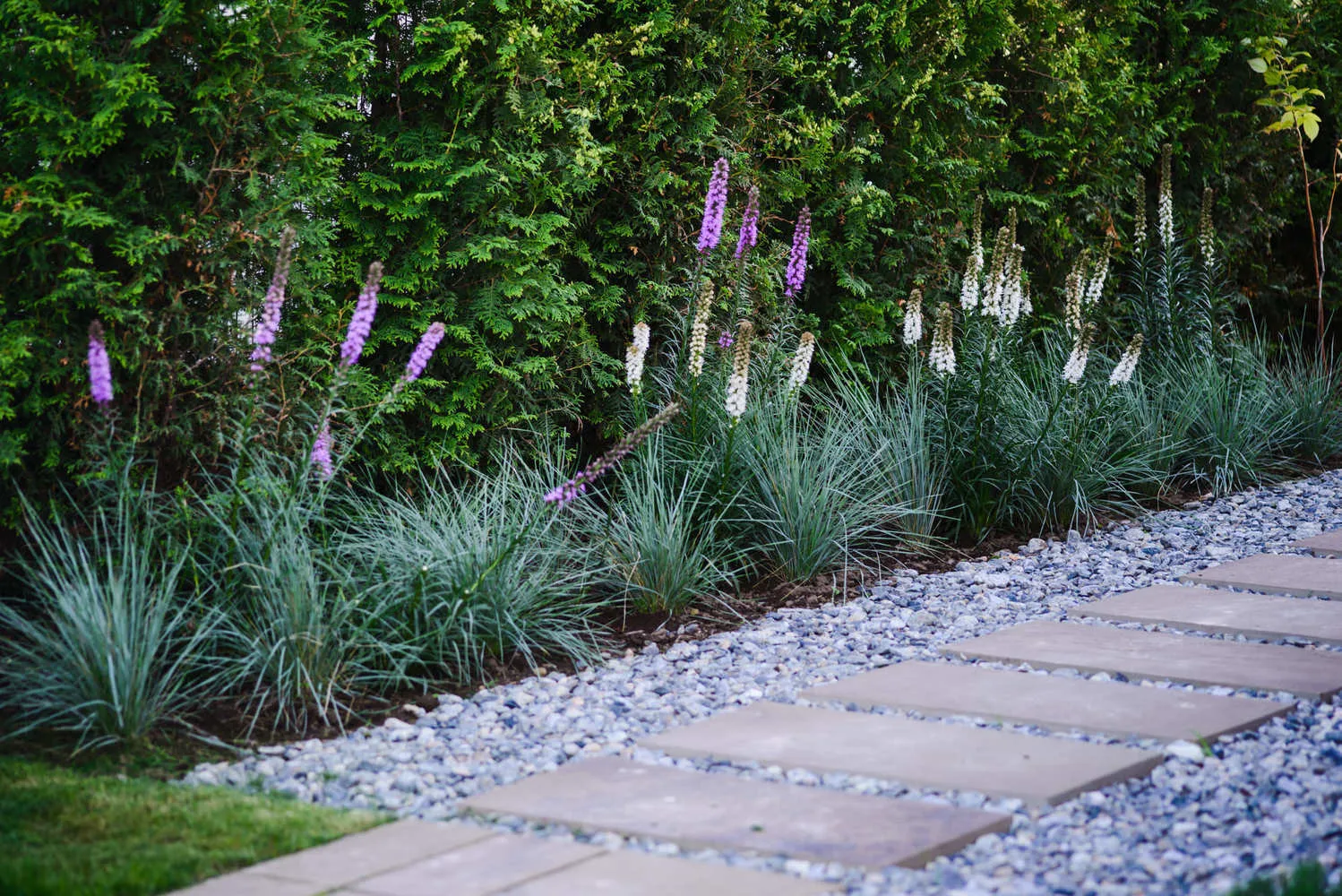 Design: Derevo Park
Design: Derevo ParkTake the architecture of buildings into account
When choosing an apron for the kitchen, it's important that it matches the interior. The same applies to paths: the material should resonate with the house, facade, or foundation.
Prepare the plot
It is essential to drain the area of the plot where you will lay the paths so that the paving is not in water. Then, gravel base is laid in geotextile. If the preparation goes successfully, vertical leveling of the area is done correctly (the level is even), and runoff of meltwater is provided, paths will serve you for a long time.
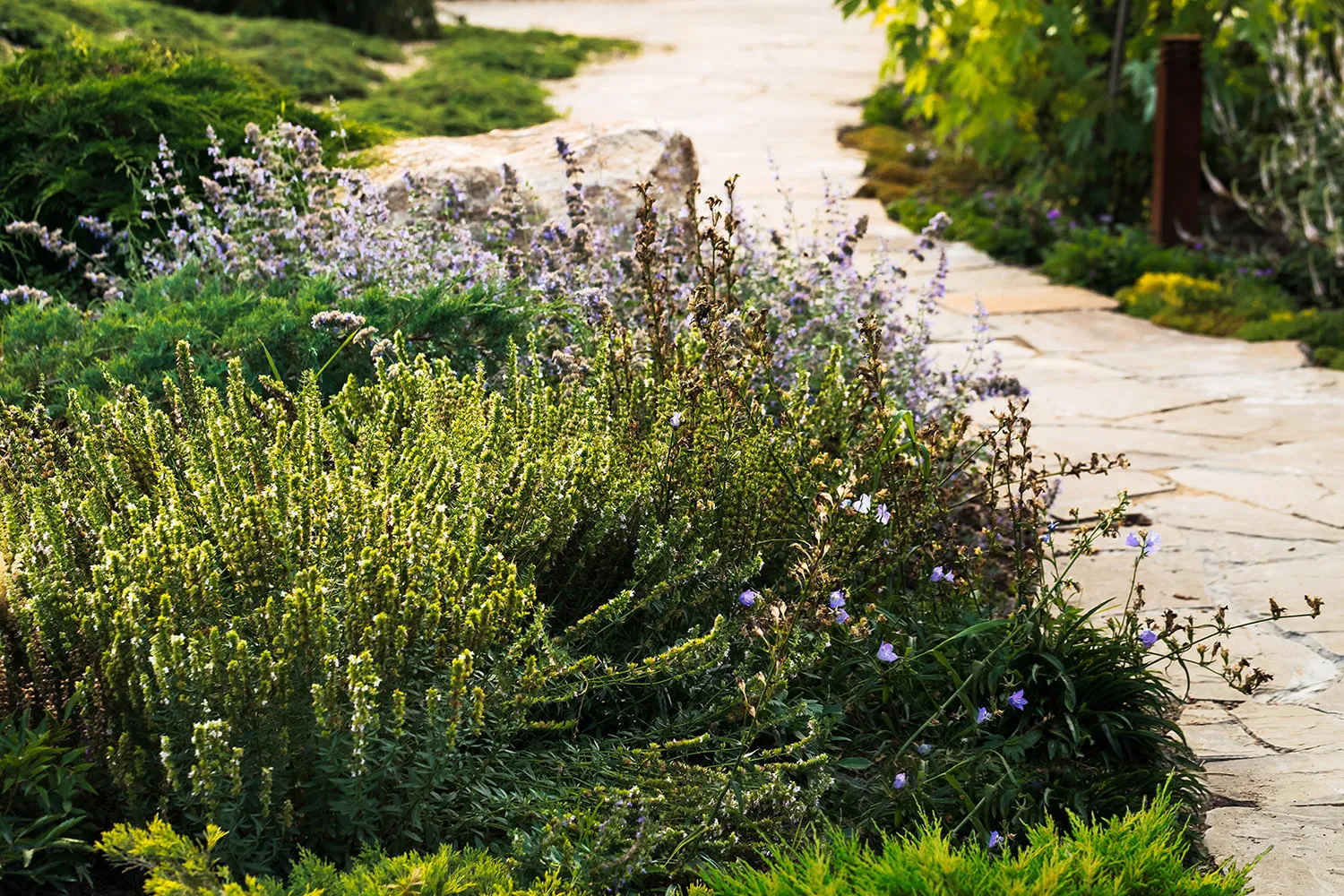 Design: Derevo Park
Design: Derevo ParkChoosing materials for paths
Gravel or granite chips are suitable for improving drainage on the plot. Bark, soil coverings, river stones, sand, gravel, bricks, cobblestones, or broken concrete are interesting from a design perspective. Let's look at five popular options in more detail.
Granite
A costly but stylish and practical material that lasts long. For example, Karelian gabbro in thermal treatment has a beautiful dark gray tone — but this is already a premium category option.
Granite is convenient to use in a crushed format: it won't be slippery in winter. Even during ice formation, granite remains grippy, and shoes don’t slip on it. With tiles in cold weather, it's harder to use, and they look more traditionally, reminding of landscapes from the 2000s.
Take note
An excellent trick is to use step-by-step paths. Designers go to the base and select the largest tiles, one meter in size. They assemble a path using these tiles with small gaps between them.
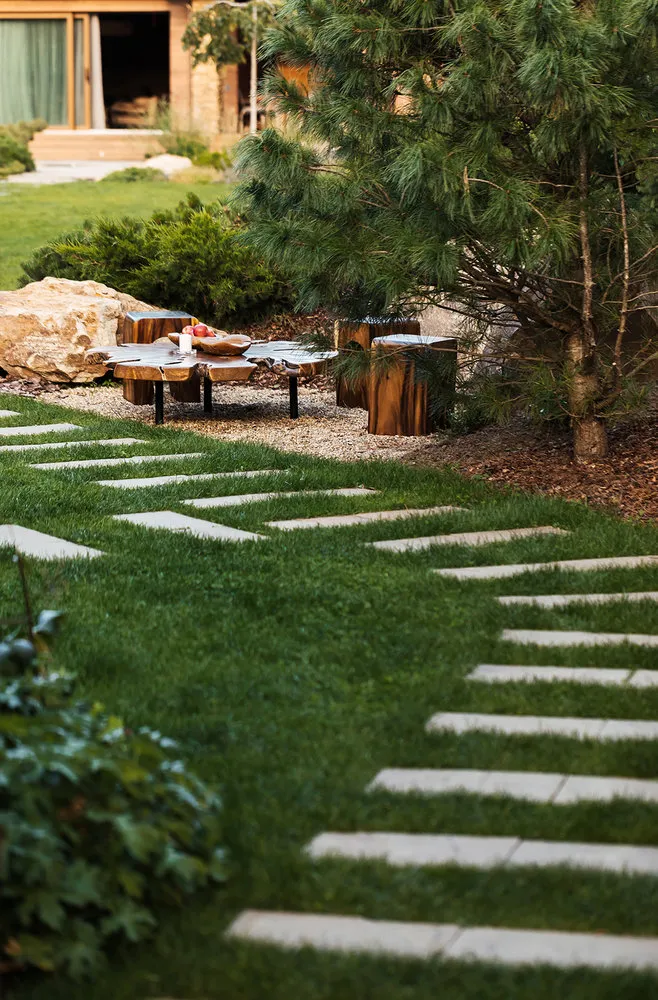 Design: Derevo Park
Design: Derevo ParkClay brick
It allows you to choose colors that don't exist in natural materials. Compared to sidewalk tiles, clay brick is durable.
But there's a big drawback: the material is very slippery. If ice forms, you'll have to sprinkle the paths with sand or a mixture of sand and salt.
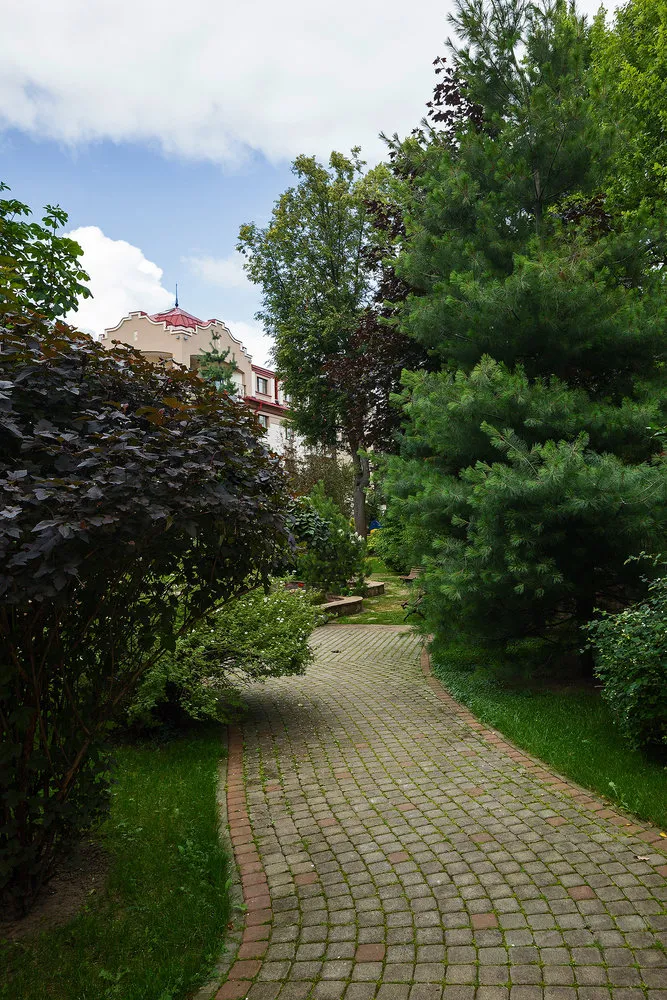 Sidewalk tiles
Sidewalk tilesThe most modern option is cement-sand tiles with gravel coating or color pattern (which makes the tiles harmonize with buildings on the plot). For large areas, this material is more budget-friendly than clay brick.
 Design: Derevo Park
Design: Derevo ParkPaths from screenings
A suitable option for secondary paths or trails with technical purpose — for parking or a second entrance. Besides, it's an affordable option. A big disadvantage of this paving is that the decorative chips are brought into the house and onto the terrace. This is a strong abrasive requiring renewal and refilling every four years, or more often under heavy load.
Sometimes the material is bonded with polymers, which gives it a more noble look. In addition, the coating becomes waterproof and doesn't scatter underfoot.
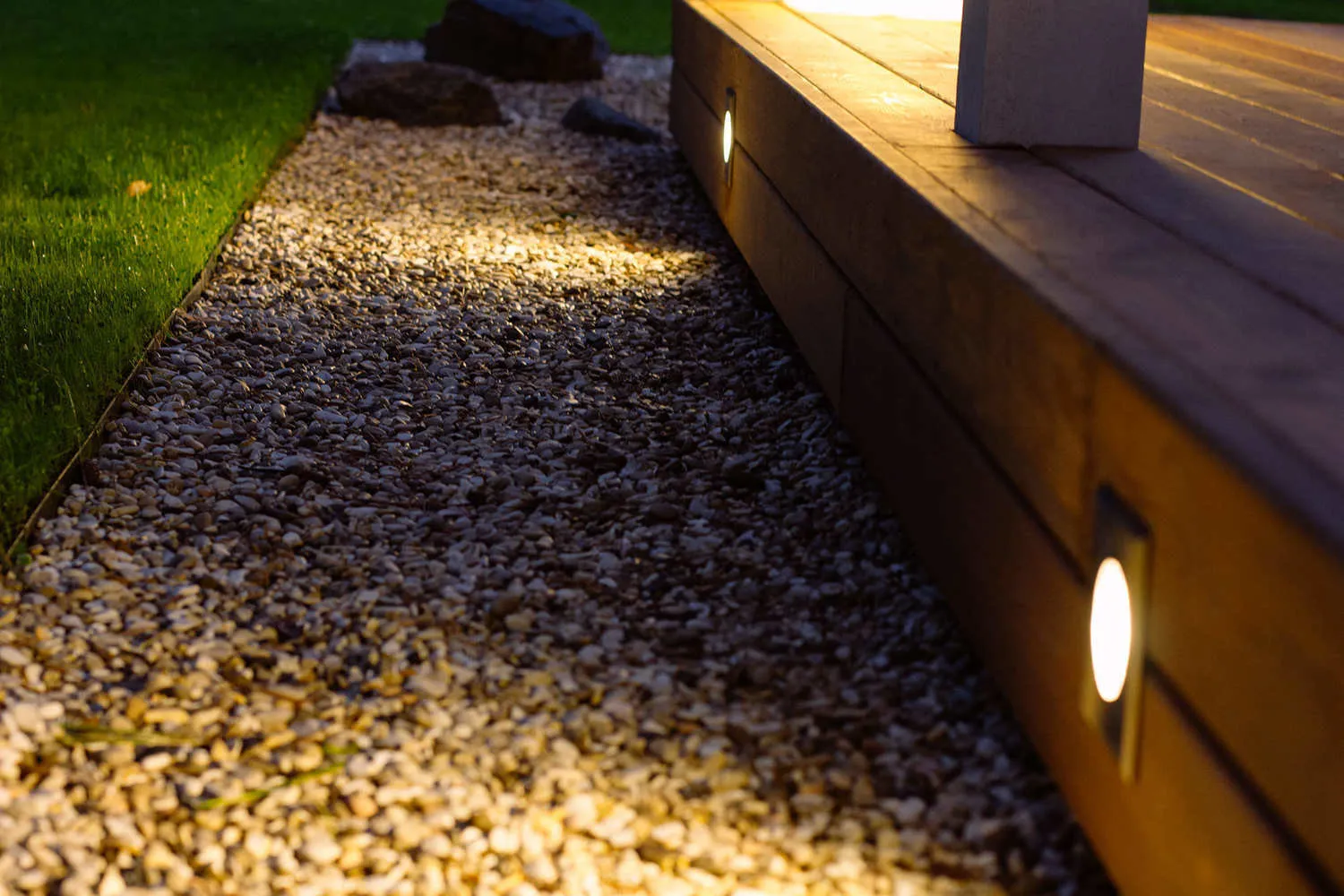 Design: Derevo Park
Design: Derevo ParkWooden decking
Frequently used in forest zones when you need to walk between trees without damaging the root system. The path is raised 20–30 cm above the ground and set on piles to avoid harming the ecosystem. Another advantage is that the coating thaws quickly in spring, and you can safely walk on it even if snow is still around.
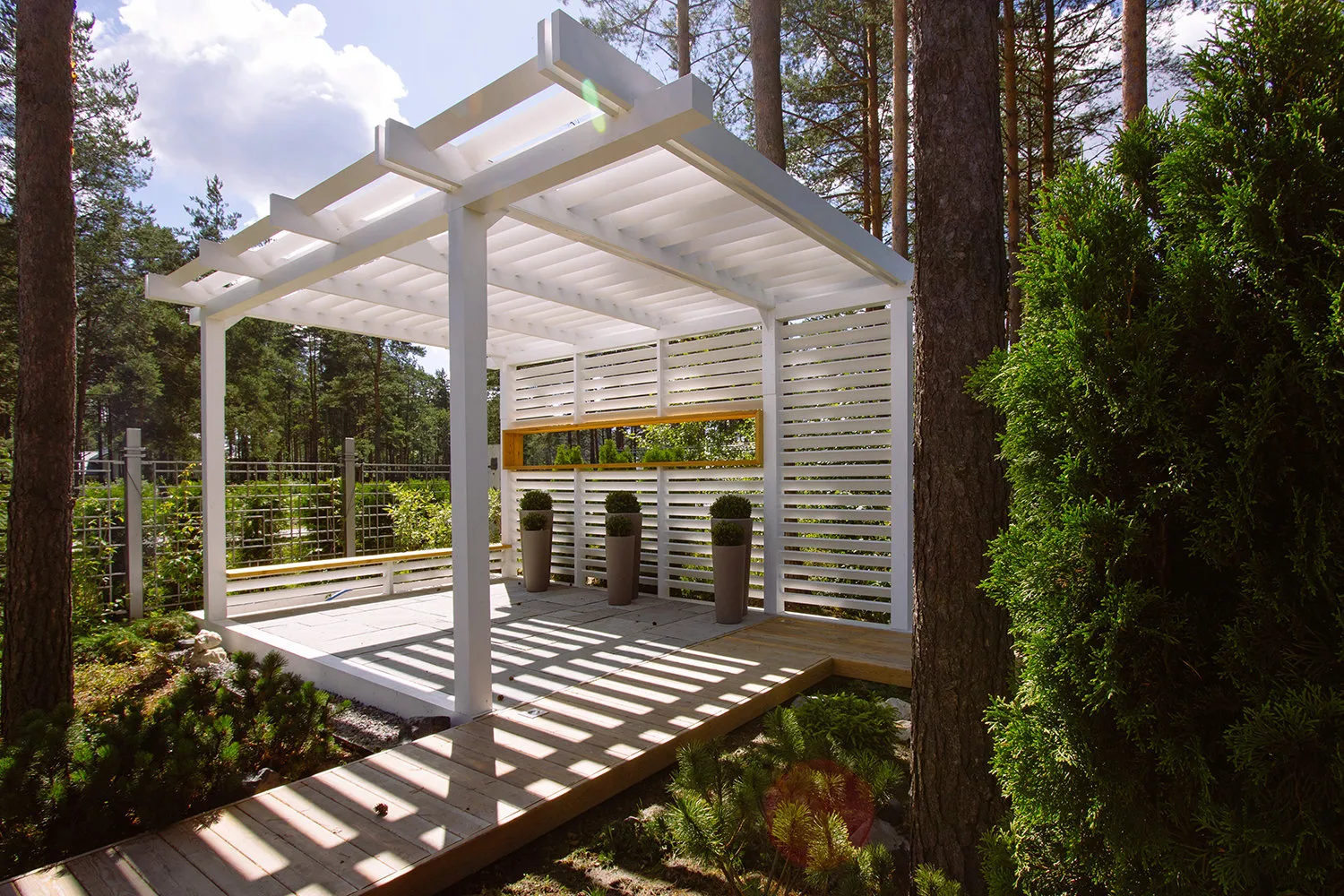 Design: Derevo Park
Design: Derevo ParkHow to properly zone the plot?
Experts explain how to correctly place paths on the plot for comfort and beauty.
More articles:
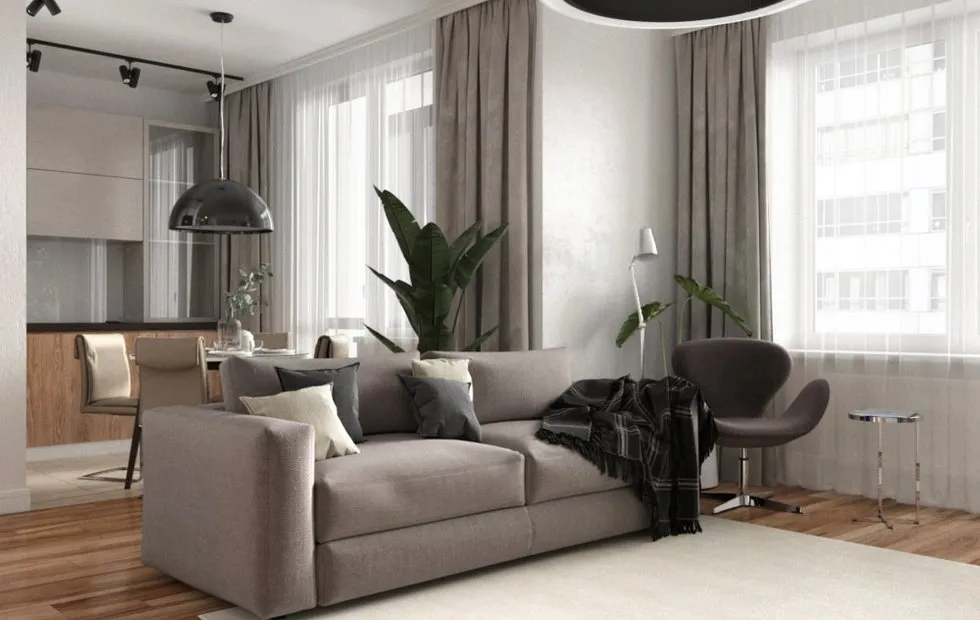 Relocation: what did they sacrifice for a bedroom in a studio?
Relocation: what did they sacrifice for a bedroom in a studio? Summer Sale at IKEA: Up to 20% off on PAX and 9 Other Products
Summer Sale at IKEA: Up to 20% off on PAX and 9 Other Products Repairing the Bathroom Without Mistakes: 12 Tips from Professionals
Repairing the Bathroom Without Mistakes: 12 Tips from Professionals IKEA Launches a Sweepstakes for a Trip to Sweden. Why and How to Participate?
IKEA Launches a Sweepstakes for a Trip to Sweden. Why and How to Participate? 6 Ways to Survive the Heat Without Air Conditioning
6 Ways to Survive the Heat Without Air Conditioning Apartments with Eiffel Tower View
Apartments with Eiffel Tower View 6 Ways to Zone Space Using Partitions
6 Ways to Zone Space Using Partitions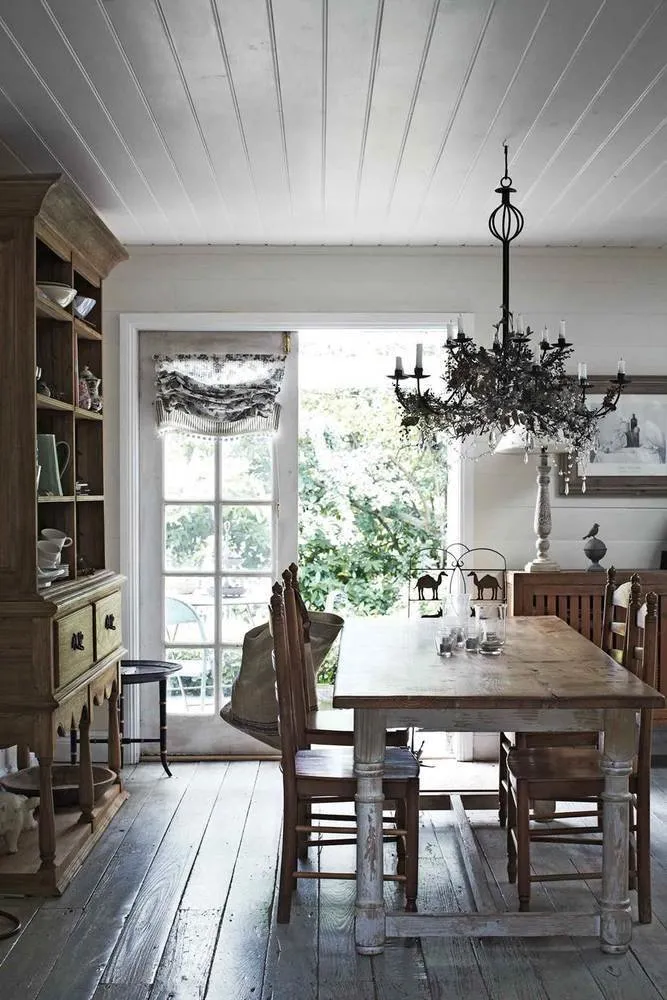 How They Transformed a 200-Year-Old Cottage
How They Transformed a 200-Year-Old Cottage